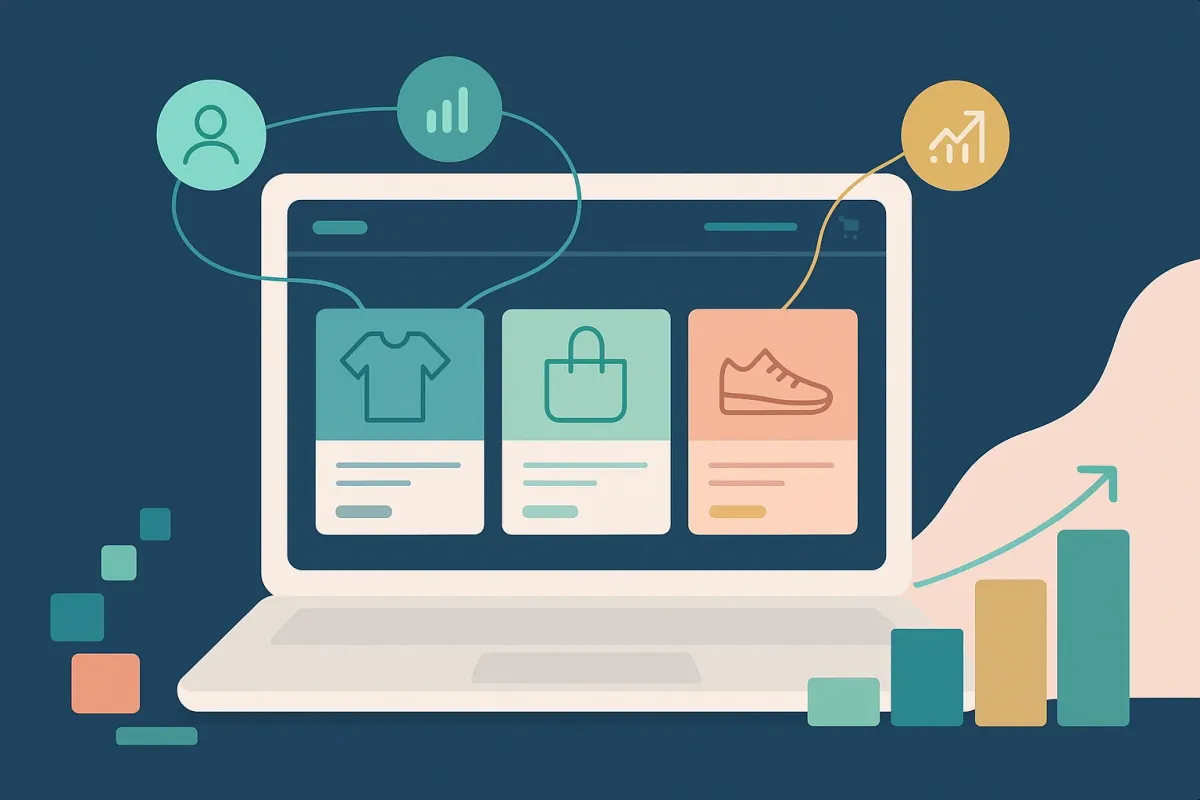Getting Started with E-commerce Personalisation: Why Simple Wins

The curiosity about how agencies can make personalisation work was palpable at Codegarden 2025. Yet the common pushback of "This won't work for my business because we're too niche" was something we've all heard, usually followed by concerns about complexity, cost, or the fear that the retailer's industry is somehow different from everyone else's.
Here's the reality: personalisation works for any business. Even if robots and algorithms eventually take over the buying process entirely, they'll still appreciate having relevant, targeted content served up efficiently. The question isn't whether personalisation will benefit your business; it's how to implement it without getting lost in the maze of possibilities.
The Paralysis Problem
After two decades in e-commerce and implementing personalisation strategies for over 15 years, I've watched countless businesses talk themselves out of action. They become overwhelmed by the sheer number of options available, from AI-driven recommendation engines to complex behavioural triggers, and end up doing nothing whilst competitors gain ground.
This decision paralysis is compounded by what we refer to as the "cold start" problem. Many agencies jump straight into sophisticated personalisation features without laying the groundwork. When retailers are finally ready to implement advanced personalisation, they discover they have no user data to work with. They're forced to wait months to gather enough information to build accurate user personas, while their competitors are using that time to refine their own strategies.
The TSD Personalisation Methodology: Start Simple, Build Smart
Based on our experience across retail, auction houses, and even retail brokerage, we've developed a three-stage approach that eliminates the cold start problem whilst delivering immediate value:
Stage 1: Foundation - Analytics-First Approach
Before thinking about personalisation features, implement comprehensive tracking. This isn't Google Analytics; it's the personalisation engine that tracks and understands how users interact with your products, content, and categories. Most businesses are sitting on goldmines of behavioural data they're not even collecting.
Take Westons Cider, a classic "House of Brands" operation. Rather than guessing which customers prefer their fruitier Rosie's Pig versus their stronger Henry Weston Vintage, we track visitor interactions with products and content. This simple data collection allows us to align customers with specific brands, reducing email marketing costs whilst avoiding the dreaded inbox bombardment.
Stage 2: Broad Grouping - Identify the Simplest Segments
Once you're collecting data, resist the urge to create dozens of micro-segments. Start with the broadest, most obvious groups possible.
For Wye Valley Brewery, we discovered that drinkers rarely cross between their ale and lager offerings; a Butty Bach enthusiast is unlikely to suddenly switch to their 1985 lager. By tracking these simple preferences, we can effectively focus marketing efforts without relying on complex algorithms.
The auction house Brightwells presented an even clearer segmentation opportunity. Their customers fall into distinct departments (Plant & Machinery versus Classic Cars) and roles (Buyers versus Sellers). Each group needs completely different information: buyers need bidding processes explained, whilst sellers care about commission structures. Simple tracking revealed these patterns immediately.
Stage 3: Progressive Enhancement - Build Complexity Incrementally
With your foundation in place and basic segments identified, you can start adding sophistication. For clothing retailers, we've implemented simple filter memory; if a customer consistently searches for size Large items, we pre-select that filter on return visits. The result? Increased product views and fewer frustrated bounces when customers discover that sale items aren't available in their size.
Real Results from Simple Strategies
The beauty of starting simple is that even basic personalisation delivers measurable results. Our clothing retail clients have seen upticks in products viewed per session and significant reductions in quick bounces from product pages, particularly on sale categories where size availability matters most.
These aren't revolutionary features requiring months of development. They're straightforward implementations that any competent development team can execute quickly, providing immediate value whilst you plan more sophisticated enhancements.
Why This Approach Works
Having shared the stage at Codegarden 2025 with Umbraco's CEO and Commercial Product Manager, discussing how agencies can effectively implement personalisation, one thing became clear: the most successful implementations start with solid foundations rather than flashy features.
Modern CMS platforms like Umbraco and Sitefinity are leading the way in making personalisation accessible. Unlike platforms such as Shopify, which rely heavily on plugins, these systems offer integrated personalisation capabilities that grow with your business needs.
The key is recognising that personalisation isn't a destination; it's a journey. Every business can start somewhere, and the businesses that start simple often end up with more sophisticated, effective personalisation than those who try to implement everything at once.
Your Next Step
If you're ready to move beyond the "this won't work for us" mindset, the question becomes remarkably simple: What data aren't you collecting today that could help you serve your customers better tomorrow?
The answer to that question is your starting point. No complex algorithms required, no massive budget needed, just a commitment to understanding your customers better, one data point at a time.
Next, we'll explore how different industries are applying these simple personalisation principles to drive remarkable results. From wine membership institutions, legal training platforms to speciality spice retailers, discover how sector-specific challenges create unique personalisation opportunities.
